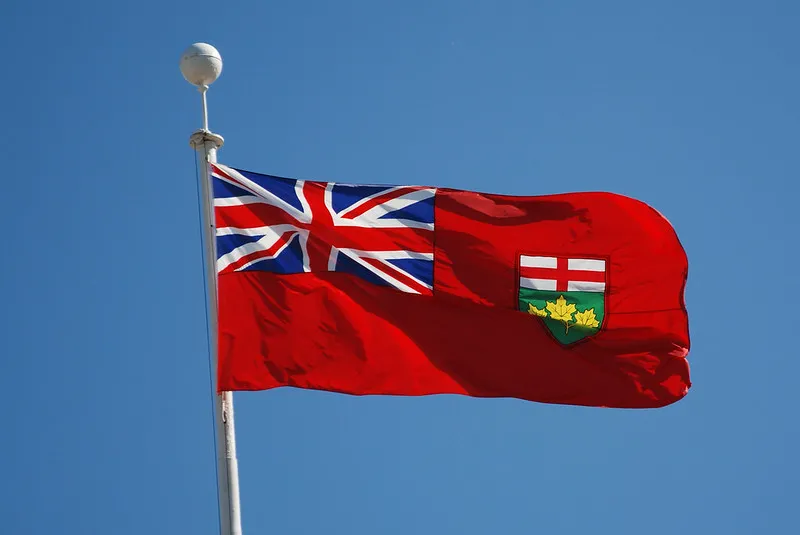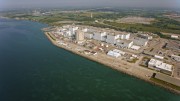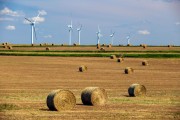Since a successful coal phase-out in 2014, Ontario has been vying to attract international investment by building a reputation as a source of abundant non-emitting electricity. However, progress towards this goal has stalled thanks to the province’s rising reliance on gas-fired generation. The 2024 Independent Electricity System Operator (IESO) Annual Planning Outlook (APO) forecasted that 14% of Ontario’s generation will be gas-fired in 2025, with that number rising to 25% in 2030.
The provincial government says this is a temporary stopgap to compensate for lost capacity during planned refurbishments of its ageing nuclear fleet, which should be complete in the early to mid 2030s. However, new gas plants are eligible for the Independent Electricity System Operator’s (IESO) upcoming Long Term 2 (LT2) procurement, which explicitly aims to ensure sufficient supply to meet projected demand into the 2030s and beyond.
With gas use on the rise, and new gas-fired plants potentially being built, there is a risk the province will lose investment to jurisdictions that can supply clean power for the next decade or more. Increased gas use could also lock ratepayers into higher rates than if Ontario opened the door wide to low-cost renewables, storage, and grid enhancing technologies. Modernized grids that maximize renewable power outperform those that rely heavily on gas generation. This new reality is supported by the fact that nearly two-thirds of global energy investment in 2024 was in non-emitting energy.
If Ontario is serious about growing its economy with an abundant supply of non-emitting electricity (i.e. its stated ambition to be a ‘clean energy powerhouse’), it needs to send clear policy signals about the intent to wean itself off gas-fired power by ensuring that new sources of supply are comprised of low-cost, non-emitting generation and by taking purposeful steps to modernize the grid. This means prioritizing development of energy storage and distributed energy resources (DERs) such as energy efficiency, demand response, and rooftop solar, and exploring other innovative approaches to electricity system management like distribution system operators and virtual power plants.
Electricity sign posts
Ontario is currently working on several very important directives that will formalize its strategy for ramping up electricity production. These documents include the Ministry of Energy’s Integrated Energy Resource Plan (IERP), the provincial Natural Gas Policy Statement, the IESO’s final LT2 request for proposals (RFP), and the DER Incentive report. Together, these guiding documents will provide valuable direction to the Ontario Energy Board, the IESO, electricity investors, and utilities on what the province’s future electricity system needs to look like.
These documents also have the potential to accelerate growth of Ontario’s non-emitting electricity supply, in part by reimagining how important new technologies like battery storage, demand-side management, and residential solar panels will be compensated for the money they save ratepayers and reliability services they provide to the grid.
There are several key components that the Pembina Institute will be looking for in these directives:
- An IERP that prioritizes increased wind and solar generation and energy storage. The most important component is a commitment to meeting demand with low-cost renewables. Wind and solar are the lowest-cost forms of generation available, and Pembina Institute research has shown that grids with high penetration of these resources do not experience elevated electricity prices or reduced reliability. Long-term planning is key to successfully integrating wind and solar generation and bringing electricity costs down, so it is essential that the upcoming IERP looks at what the province can do to prepare the grid for more renewables and encourage and support municipalities to accept renewable energy projects in their areas.
- A Natural Gas Policy Statement that commits to using gas-fired power only for reliability services once nuclear refurbishments are complete in 2035. Ontario should plan its normal grid operations around non-emitting resources in order to achieve a cleaner grid and attract international investment. At the moment, gas-fired power provides energy, capacity, and ancillary services (such as voltage control, frequency regulation, and restarts after blackouts). In other words, these plants run almost all the time, even when there is sufficient power coming from other sources to cover grid demand. A commitment to increase wind, solar and storage should be accompanied by a commitment to transition to using gas-fired generation only for ancillary, emergency, and peaking services in the future.
Change future LT2 RFPs to accept only non-emitting generation. Change the current LT2 RFP so that at the very least, it is an even playing field for all generation types. The ongoing LT2 procurement is an incredible opportunity for Ontario to reduce electricity emissions while providing abundant, affordable clean power to grow the economy. Originally, only non-emitting generation was eligible for the procurement – an approach that has borne successful results in other jurisdictions. For example, British Columbia’s 2024 Call for Power, which only invited applications from clean or renewable projects, procured 10 cost-effective wind and solar projects that will provide 5000 GWh of electricity annually, while Hydro Quebec procured over 1500 MW in a wind-only request for proposals last year. Meanwhile, Ontario has added very little wind or solar to its grid in the last decade, despite the two technologies' falling costs and rapid deployment elsewhere around the world (global investment in solar, for example, surpassed that in all other generation technologies, combined, in 2024).
If the LT2 RFP is to be open to all forms of generation, it must at least ensure a level playing field. At present, gas-fired generation receives bonus points over batteries in the procurement’s ranking system when gas is proposed as a form of energy storage. LT2 should remove this favouring of gas-fired projects.
- A DER Incentive report that captures the full value of DERs. Distributed energy resources – a common example of which is neighbourhood rooftop solar – can provide numerous benefits to the grid and save ratepayers money, including generating electricity where it’s needed most, providing non-emitting generation alternatives, reducing congestion on transmission lines, and easing the burden of demand peaks by shifting load to other times of day. To encourage cost-saving DERs like wind, solar, batteries, and electric vehicles, these must receive payments that reflect the true value of all of these benefits. The New York State Public Service Commission’s Value of Distributed Energy Resources (VDER) program, commonly known as the Value Stack, is an example of how DER owners – such as homeowners with rooftop solar that provides electricity back to the grid – are compensated through electricity bill credits for both the electricity they generate and the grid stability services their DER provides. The upcoming DER Incentive Report is expected to make recommendations on how to turn those benefits into monetary value for DER projects here in Ontario, which will be important for driving greater investment into DER and bringing more of these flexible assets on to the grid.










